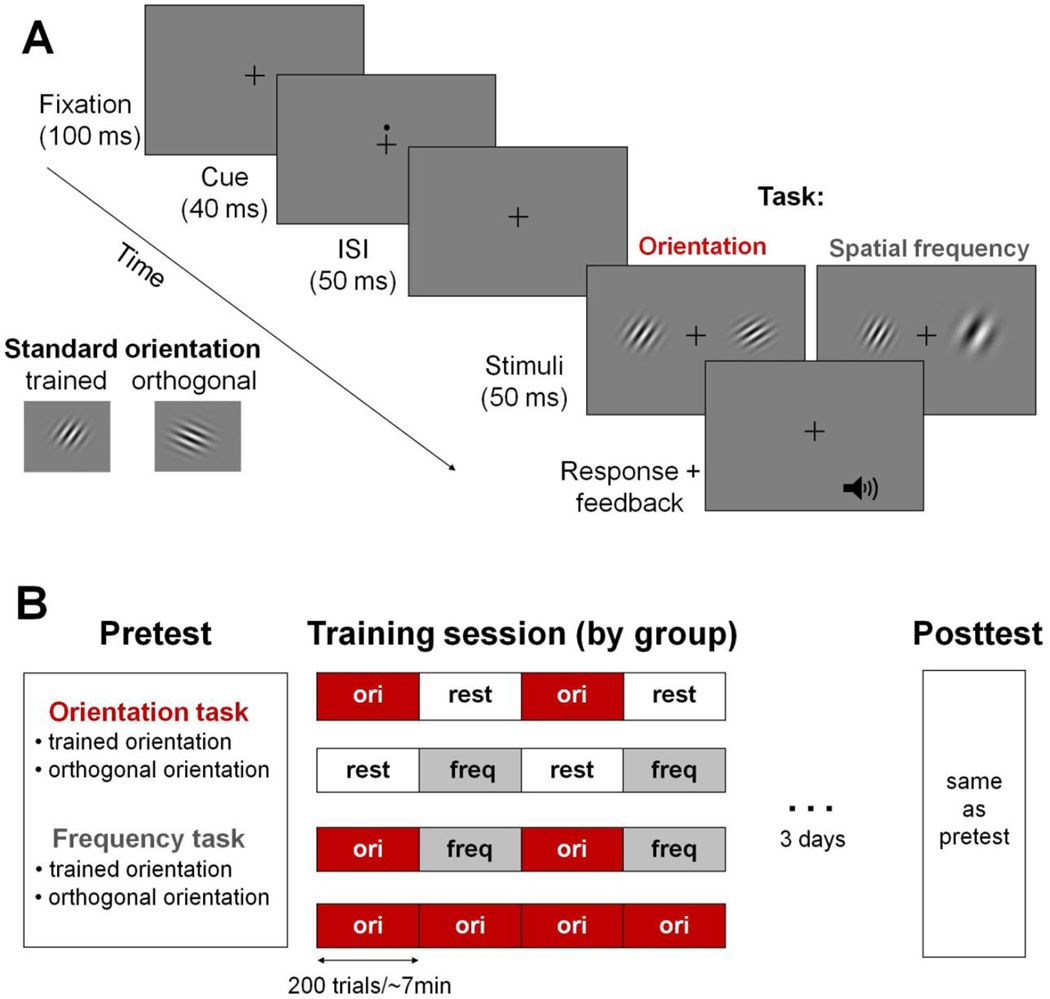Figure 1.
A. Trial sequence used for all groups. Each trial started with a 100-ms fixation cross, followed by a 50-ms temporal cue, followed by a 50-ms ISI, after which the two stimuli appeared for 100 ms. The stimuli included a standard stimulus (oriented at 30° or 300°) and a test stimulus which varied in spatial frequency or orientation depending on the task. The location of the standard (left or right) varied randomly in each trial. Observers had to compare the two stimuli and indicate which one was more clockwise (orientation task) or had a higher spatial frequency (spatial-frequency task). Each response was followed by an auditory cue indicating whether the response was correct.
B. Procedure across groups (n=7 for each group). All observers participated in a pre-test and a post-test that included testing for the two tasks for the two standard stimuli (order counterbalanced). Each group underwent a different training procedure that was identical for the 3 training days. Groups “O-O-” and “F-F-” trained on orientation alternating with rest and rest alternating with spatial-frequency, respectively (400 trials). Group “OFOF” trained on orientation alternating with spatial frequency (400 trials on each task). Group “OOOO” trained only on orientation (800 trials).

